The experience I’ve gained as an artist in the American Arts Incubator (AAI) program both abroad in Moscow, Russia and locally in the States has been a journey, to say the least. I’ve made many acquaintances and seen how different and similar it is to live in Moscow for a time. Great insights from the participants were generated throughout the four weeks of AAI workshops and project development.
The participants gained the most when we used the workshop time to interview people at areas of interest — whether at Garage Museum of Contemporary Art or Preodolynie Rehabilitation Center, each had their unique perspectives into the local issues surrounding social inclusion for people with disabilities. Collaboration across cultures and institutions were made as participants of AAI got a first-hand look into those they were creating their projects for, and an in-depth understanding of the topic.
It was exciting to see the projects take off, despite intense deliberations in the choosing of projects, as there were many good ideas among the participants. The projects are headed off to a good start…
The Art to be Open app is progressing into the implementation phase as roles are being reassigned. They want to move forward with their prototype as well as get the message out about their project, reach out for funding, and get help with development.
If you're looking for a meaningful project and a great team — join them! Marina needs a developer to create a platform prototype and mobile app for people with disabilities on the search for affordable recreation.
Also, check out a recent article written by fellow team member Nika Parkhomovskaya published in the journal Такие Дела (“Such Cases”), a media outlet for articles on social projects and a source of funding for innovative charities and community projects.
The Traveller on a Wheelchair team is also continuing with their project. Recently, they began promoting it through various channels and created a fan page which you can like and follow to stay updated.
Still to come is the US Embassy’s video about the projects and what went on in the AAI program in Russia. Stay tuned!
The days between the development building phase and prototype presentations on April 22nd were absolutely crazy. The four project teams had a mere two weeks to design, build, and prototype their initial project ideas around themes of inclusion that could be incorporated into their local communities. All of the teams worked hard to solidify their ideas and used rapid prototyping to mock up something tangible for their presentation pitches.
The pitch structure took inspiration from Silicon Valley, and gave each group a chance to show off their work using art as a tool to engage users in thinking about ways their prototype could make a difference in their community. It also motivated them to move their ideas forward while making the right connections along the way.
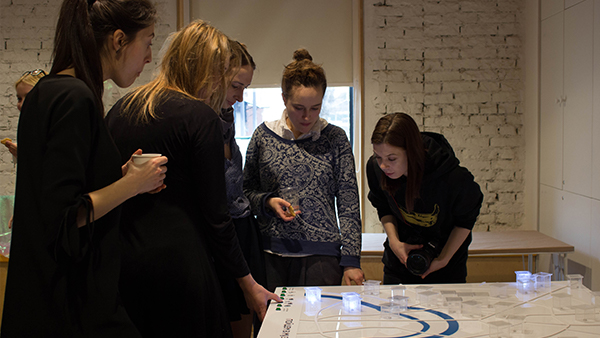
The day started with Marina introducing Garage’s partnership with ZERO1 and their focus on the topic of inclusion for their spring programming. I introduced the American Arts Incubator workshop and gave an overview of the topics around inclusion we had discussed as a group, the field trips we went on, and our interviews with people with disabilities over the past three weeks. After congratulating the teams on all the hard work spent on their initial prototypes, we kicked off the event with a series of pitches by the teams which included time for feedback, discussions, and Q&A from the audience. 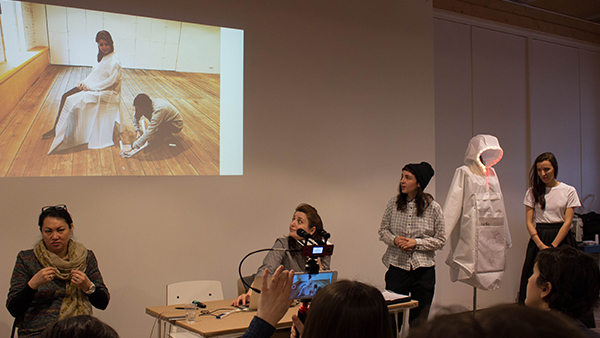
It was important for teams to present a tangible prototype along with their pitches to help the audience connect to their ideas and messages. It helped bring them into the reality that each team was trying to create: a vision of a future world where inclusion is tackled by technology, second-nature apps, customizability, and unique fashion tastes. At the heart of each project was a message for the general public to start actively addressing inclusion in the community — through education, breaking stereotypes, instilling healthy public perceptions, and co-creating opportunities of inclusive collaborative play. As each team worked to solidify these themes, they had to find opportunities in design, whether their message was a call for more inclusive museums or normalizing communication through emotions. It was important to emphasize the prototyping process in the weeks leading up to the exhibition. 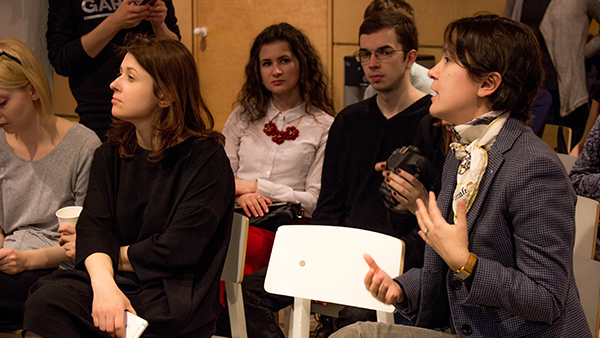
The day ended with a round table, trade show-style setup. I was inspired by my experience at SXSW where finalists had their prototypes out by their booths for demos and conversations. In the space we had at Garage’s Educational Center, we set each of the prototypes along the walls. As the presentations ended, the audience was invited to move around the room to each table and interact with the prototypes and ask the group any further questions. This allowed for more casual and candid conversations among well-connected artists in the theater scene, the art and gallery spaces, and those from the disabled communities working between art and inclusion.It was great to see the excitement that ran through the whole room and the genuine curiosity everyone had for how technology could be integrated with both art and social inclusion. It advanced the topic of inclusion into the realms of designing services, apps, and products that could one day inspire ways to address inclusion all over the world.
by Elaine Cheung
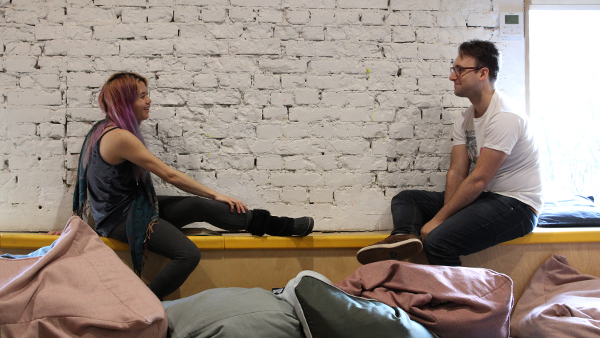
In addition to the four community projects, I created a project that I did research for on the ground in Moscow and in America before I left in April. Garage MCA’s Department of Inclusion had been interested in adding future sensory rooms and universal playgrounds to their future expansion efforts at the museum. Sensory rooms are generally used in hospitals or schools where kids on the autism spectrum can explore their tactile senses in a safe setting, as opposed to the often overly stimulating environments of our cities which can lead them to sensory overload. Sensory rooms are meant to be mentally calming spaces to help facilitate learning and play. In approaching the concept of a sensory room as a designer and artist, I questioned how this kind of room could be designed in our smart technology era. 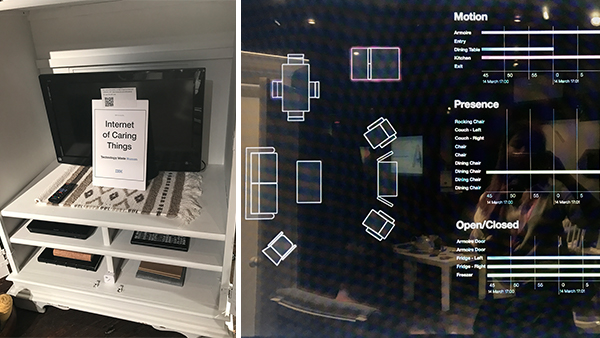
Technology enables people with disabilities more freedom and independence due to the adaptability and computing power of smaller devices like phones and microcontrollers. The next step would be to think beyond adaptive technology and consider the design of experiences and environments for those with disabilities. What if our environments were able to pick up emotions and calm us down in ways that delight and move our senses? With the therapeutic aspects of sensory rooms, I created my own version that aims to visualize ways in which environments can be more friendly and responsive to the needs of someone with a disability — allowing for interaction in an environment where they can play and learn simultaneously. The installation broaches ways of creating alternative healing experiences with technology and attempts to view disability through the lens of play, access, and sensory creativity. 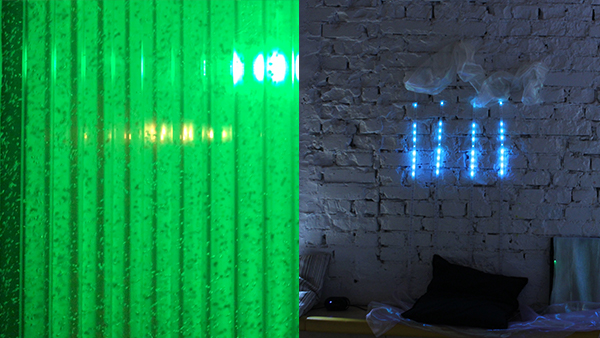
When people sat on the pillows, low and relaxed chords would play as the other pillows joined in unison. The LED lights on the wall mimicked the effect of water bubbles in the Sensorium room. But instead of using water and light, the animation of the LED strips flowing up and down at a slow and steady pulse created a calming effect with purely digital outputs. To further encourage social play, proximity sensors were installed so that when viewers moved around, they could change the hues of the light. The installation was placed alongside the other four community projects and it was exciting to watch as participants engaged with the work.
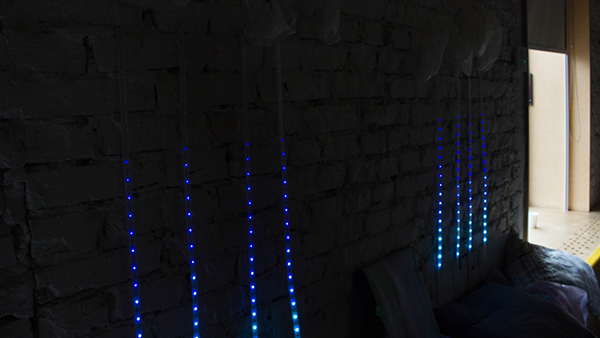
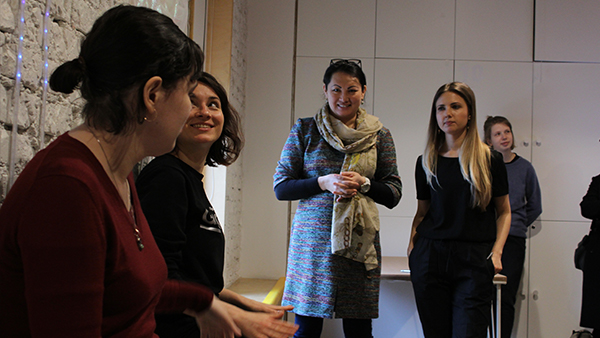
I was really excited by all the enthusiasm participants had for the subject of inclusion in art and for speculative design thinking, even at the level of looking at how sensor and DIY electronics technology can impact the lives of people living with disabilities. The Incubator brought people from different backgrounds that have the same commitment to creating inclusive experiences. It would be inspiring to see American museums consider disability and inclusion in their future programming and exhibitions. Here in Russia, participating artists displayed grace, commitment, and passion to building communities and creative experiences accessible to truly anyone.
Exhibition on April 22, 2017
Official Event Postings:
Garage Museum of Contemporary Art’s Website
AAI Russia’s Official Facebook Page
Garage’s Official Facebook Page
The community project descriptions below were written by participants in American Arts Incubator — Russia. All four projects explore aspects of inclusion through design prototypes that speculate what future inclusive programs could look like in local Moscow communities. These projects were initiated during Elaine Cheung's Incubator workshop and will continue to develop after the Incubator.
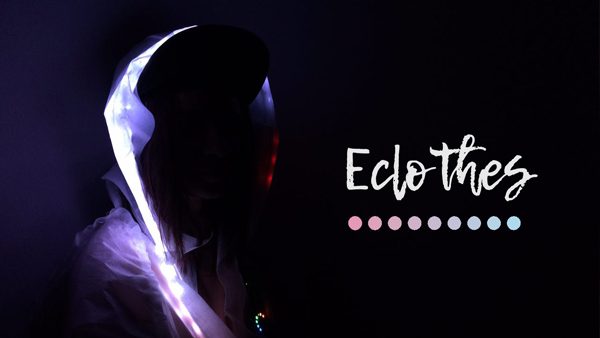
We are the E-Clothes team. Our goal is to create unique transformational clothing that is accessible by everyone, with a focus on universal design in fashion.We started with the abstract and lovely idea of creating emotional language. Emotion is the universal language that we all share. But in our modern society, it is hidden and something we often don’t pay attention to. With the E-Clothes concept, we have come up with a wearable prototype for a jacket that displays your mood by changing colors in gradients! This prototype has inspired us a lot. However, when we started to develop our project, we faced a problem, which was universality. We started to wonder how to make such an item that would suit anybody. The question stuck with us as we quickly produced our first prototype - a transforming wearable that could be interchanged between persons with a wheelchair and those without. This is awesome source of inspiration because our coat is not only useful for people with different bodies, but could potentially be suitable for various activities like extreme sports, or simply while while canoeing or fishing.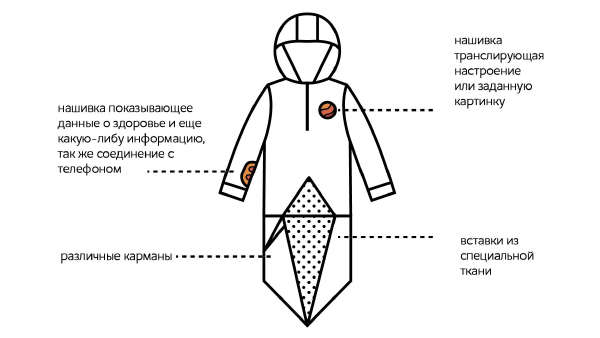
We found many people gave positive feedback encouraging us to continue the E-Clothes project. For the future of this project, we want to develop a fashion collection consisting of 5 pieces and 3 copies of each item. We are going to develop our idea with “emotions” and collaborate with a local company which works with neuro-interfaces. Our future coat will be not only be transformable but also embedded with some sensors that can help people with different needs. In addition, we want to develop a e-stickers that would transmit mood by changing colors or pictures.We are happy to hear feedback and get support! Thank you!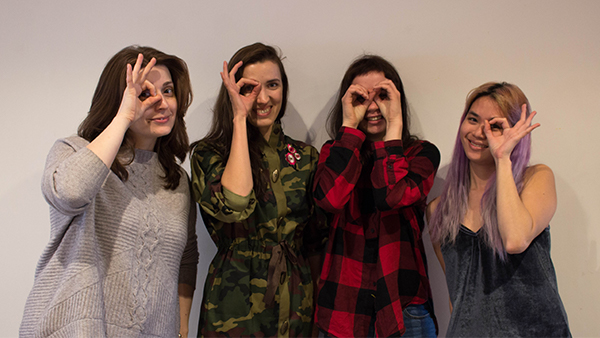
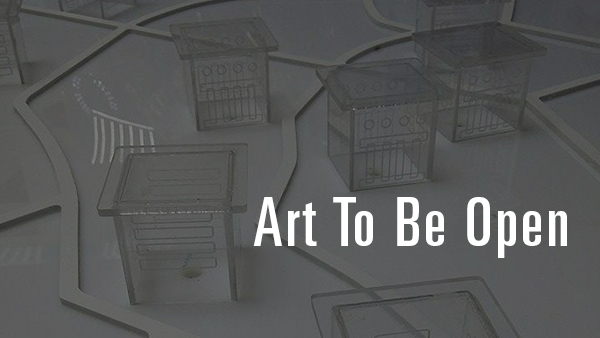
In our increasingly social society, everyone should have the right to access public cultural institutions. The Russian state obliges such premises to have “access” certificates and make corresponding reports. However, most institutions do not have their facilities accessible and points towards an underlying problem of symbolic inclusion. Some problematic examples that commonly occur are:
Inaccessible wheelchair ramps that are made too narrow.
Staff at institutions can be unintentionally rude or critical when encountering customers who might have disabilities or sensitivities, without even realizing it.
Poor translation or no translation for those with various disabilities.
Many cultural institutions claim to be “accessible” but few truly provide access to everyone. It is quite an art to be accessible-for-all. One needs to overcome lots of physical and organizational hurdles through creative research and development that improve management of institutional inclusiveness. But first and foremost, one has to leave all stereotypes and prejudices behind and take up an honest way instead of a formal one.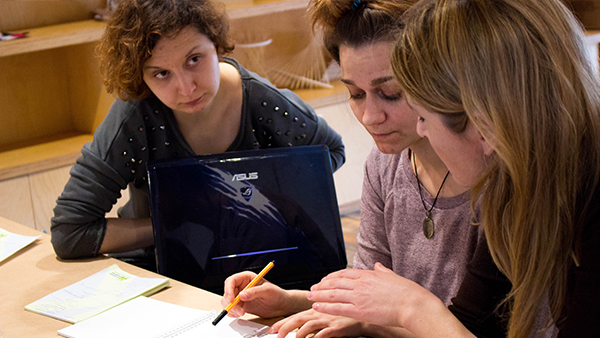
This became our focus for our Arts Incubator project. So moving forward we asked, "how could we present information on the current situation in institutions to people with different abilities to reveal the adaptation level of cultural locations?" The idea to create an “accessible” map has been out there for some time, but unfortunately most of the time the data being taken from institutional certificates turns out to be far from reality. What’s more, they often only show architectural access to where an existing lift or ramp can be out of order.We’ve designed both a platform and an application, where the main tool is user-generated content. It is a single database showing information on institutions and the services they provide to the disabled, along with the schedule of events and classes they can attend. Every user may add new places and describe them in a short questionnaire. We’ve also added rating and quick comment option. The first draft of the application prototype can viewed here: https://marvelapp.com/21e01j2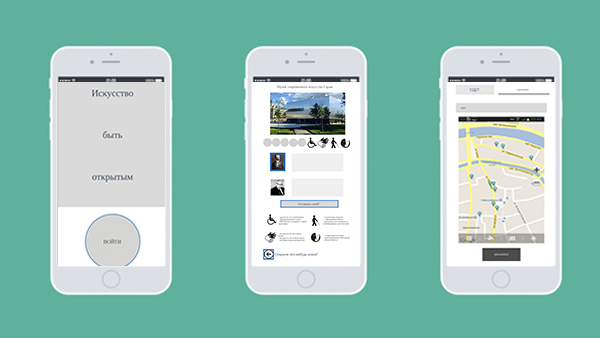
During the workshops, the patients of the Spinal Rehab Centre Predolynie (translation “Overcome”) helped us see that the problem of symbolic inclusion really existed and thus inspired our project. During project development, we decided to collect data and look into the matter ourselves. We chose 30 most-visited Moscow museums and asked their staff about inclusiveness.Our team had connections that helped a lot, and in a couple of days our questionnaires reached all of the museums except one – The Kremlin Chambers. That was the only museum that was not able to submit their data, saying it was impossible without an official request. Others were surprisingly cooperative and honest.We visualized the data we got in the installation called “Let’s Visit A Museum!” where one can see the number of cultural institutional services that are available for various groups of people. You simply press the button of a particular mode on the map of Moscow and see which buildings light up. We also made the installation touch-sensitive and recorded an audio description to make it comprehensible to visitors with poor eyesight.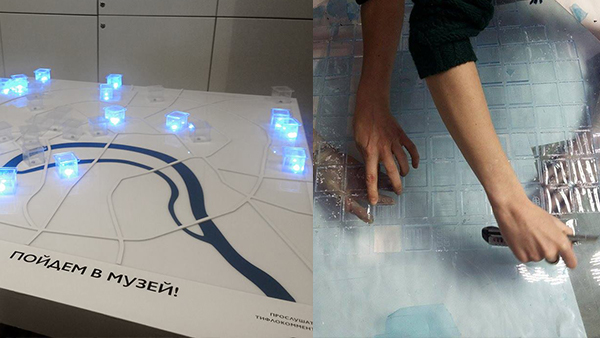
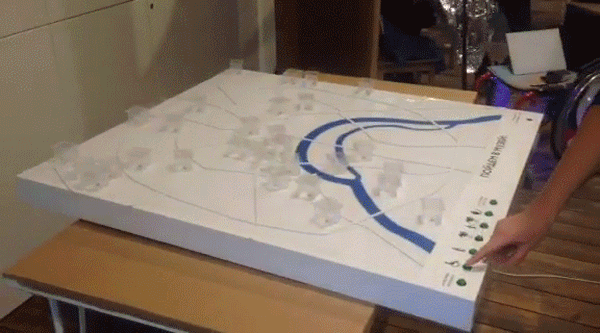
These interesting results can be used by anyone interested in further research: It turns out that just 10% (3 out of 30) are fully accessible museums that can be visited by all persons. We plan to keep developing the project and will eventually launch it formally.Our next step is to create a better, more deeply researched prototype. To do this we are going to study the target audience and the specifics of various groups by contacting funds and carrying out sociological surveys. After that, we will create the prototype, as well as try to find some sponsorships. The project is extensive, engaging a large chain of stakeholders so we hope someone will see the potential of the social impact and will want to support it.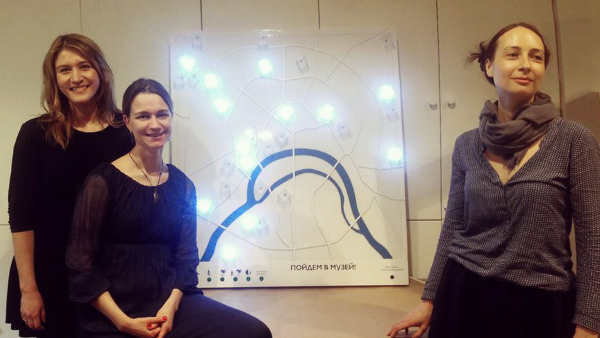
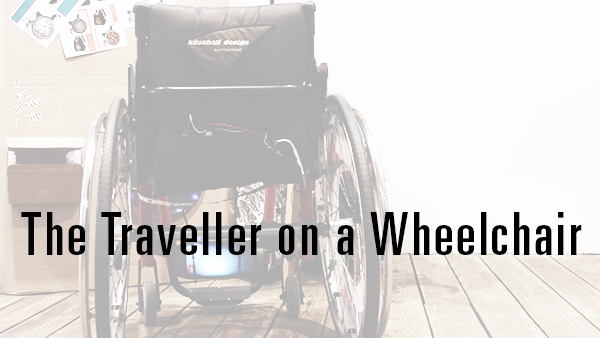
Our project, “The Traveler in a Wheelchair,” is united by a common concept of giving freedom to people who use wheelchairs to travel, both out of necessity and for leisure, and equip them with modern and online services. The project has two main objectives:
To create and adapt existing mechanical, electronic and digital (including Internet) tools to provide wheelchair users with more comfortable conditions.
To create awareness by publishing photo reports of travelers, drawing the attention of different sections of society to the problem of perception of people with disabilities.
Society in mass considers these problems to be medical, insufficiently informed about the social needs of people. Therefore, there is a need to develop communication between different groups in society, to promote modern views on the social perception of people, for various reasons not included in public everyday life. To realize these goals within the limited time frame of the AAI Project Development, we discussed and developed wheelchair devices that allow people who use them not only to move more easily, but also designing ways to achieve their goals in the field of leisure, education, self-development, and sports. We hope to continue this aspect of the project through the photo reports of the travelers.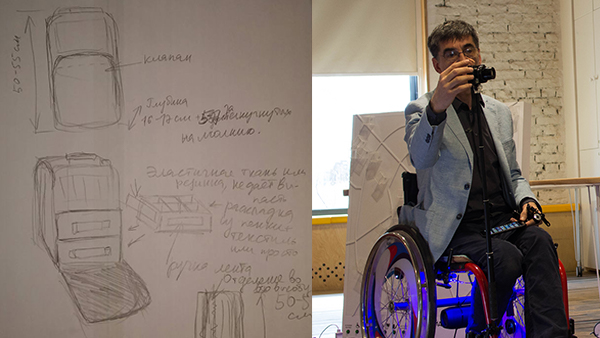
In our development, the wishes of people on wheelchairs with specific needs were taken into account, lightweight devices were purchased, allowing photographs to be taken by moving in a stroller, after which test specimens of fastenings were made for them. Also, a bag and a backpack were developed, taking into account the arrangement of folding carriages, and also taking into account other needs: illumination inside bags, using solar panels for power generation, and special colored pockets that facilitate navigating the bag for the owner or assistants. Caps designed for strollers are not just decorative elements, but they serve to protect hands from knocks, as well as to protect the spokes from dirt on the street.When a traveller on a wheelchair is equipped and allowed to live autonomously, that traveller really has many more opportunities. Not just in navigating the terrain, but to do so through art, as a photographer. Participation in the photo project promotes socialization and communication, regardless of the presence or absence of physical characteristics, which can already be considered in inclusion. Added to the fact that the devices help the traveler on the wheelchair to be autonomous, the assistance of other people and their effective involvement in the project is also part of the working towards inclusion in the wider society.In addition, we have ideas around developing a “Museum Guide” which consists of creating a database of museums, or the existing one is used, and people who like and could talk about exhibits and about these museums are registered there as future guides. The museum can conduct initial behavioral training and confirm cooperation. Each of the guides creates his profile with a description of his personality, interests and level of preparedness for this museum. Thus, a database of guides is created. When a visitor comes to the museum, he goes to the application and finds online guides active at that time. Using the description, he chooses his companion guide and communicates with him via the internet using audio or video communication that guides an excursion. Analogues of applications for finding a companion for a trip to the museum have already appeared in the world, they simply do not yet offer video communication services.A service like this can attract people whose mobility is limited: they can get remote work, socialization, additional impressions, raise their level of erudition and education, get or develop professional skills in museum activities. Users of this service can choose their own companion at any level, receive help, an individual approach, new acquaintances.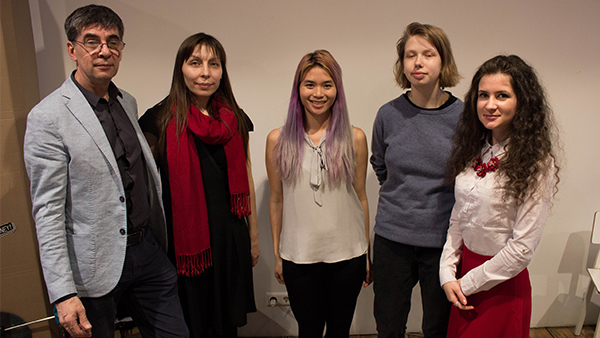
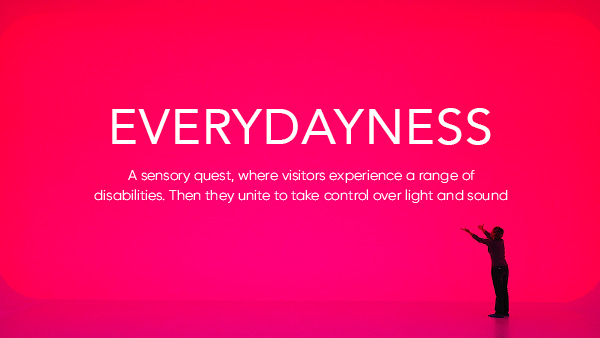
The team members, Victor Kudryashov (Виктор Кудряшов), Maria Malkova (Мария Малкова), Andronik Khachiyan (Андроник Хачикян) and Mila Machalkina (Мила Мачалкина), explored their idea of "Everydayness" — sensor quests that lets people experience disabilities in an experiential way. A visitor would experience various disabilities across 3 rooms. In the last room, we will unite all the participants where they can use an interactive sensory glove that can change the surroundings in the room itself and socially together. We first introduce guests to the lives of people with disabilities and then create an inclusive experience for people with disabilities and without to join in a fun contemporary technological experience.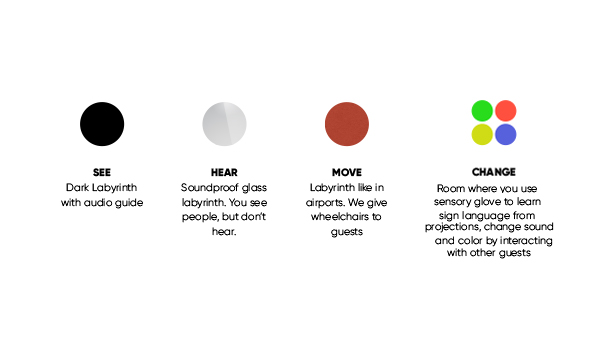
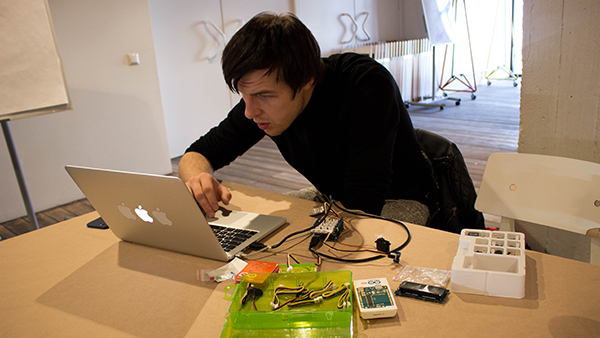
We hope to make the quest in a way that can be easily transported or reconstructed in any city. We want to raise awareness about disabilities, let people experience them, start to talk about this important topic and integrate people with disabilities into it.
After an intense workshop series that expanded over the course of two weekends plus research excursions during the week, the participants defined their interests and finalized their ideas to develop community project proposals. These projects will be presented at the final show as various prototypes that tackle inclusion in different ways.
We explored the subject of inclusion through prototyping labs, where I taught participants the use of various electronics and sensors, encouraging them to think of ways that use interactivity to create new experiences of empathy and inclusiveness in community. We played with LEDs, microphones, and tactile sensors and broke out into rapid prototyping exercises where the participants had to think fast and design quick devices throughout the lab.
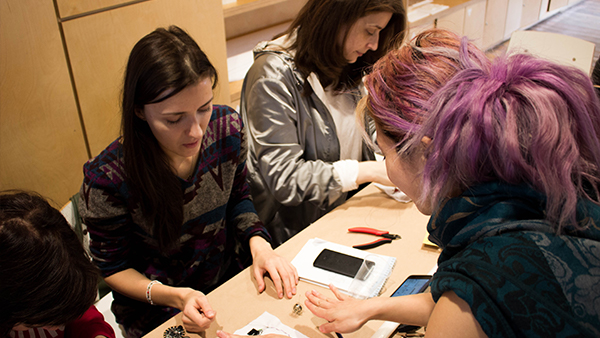
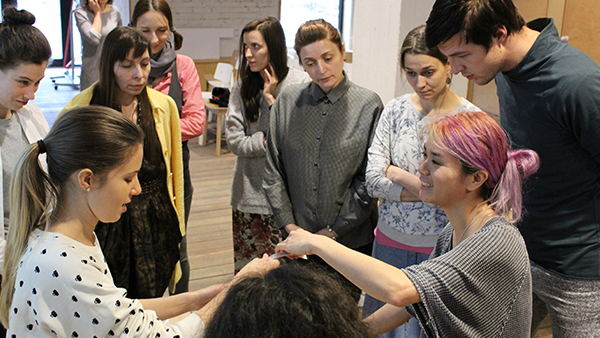
As the learning continued, I introduced the participants to various ethnographic techniques common in design research including Ideo.org’s Human Centered Design approach to prototyping. This is what’s known as "design thinking," but I’ve applied the same principals to “art thinking,” allowing the participants to learn, research, brainstorm and prototype with the goal of creating community art projects that tackle issues around inclusion. An approach like this helps ensure that these projects really matter to the communities that they are created for, addressing issues through mutual understanding and co-creation.
Along with workshops and discussions, the program included meetings with the curators of the exhibition Co-Thinkers, disabled visitors, and the staff of Garage’s Department of Inclusive Programs.
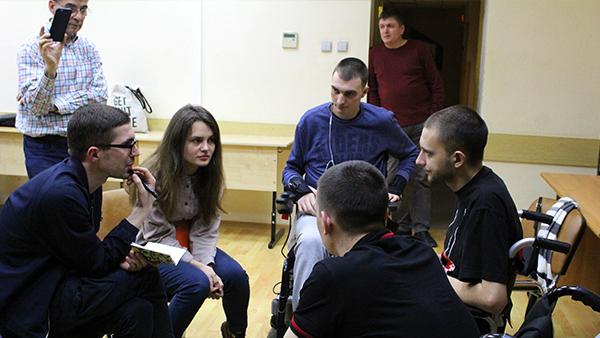

At the end of the lab, four groups of participants came together to create projects, each focused on a different aspect of inclusion: raising awareness about inclusive practices in museums; facilitating cooperation within communities; discovering new leisure opportunities; and developing new experiences for people with and without disabilities. The groups are already hard at work turning their proposed ideas into tangible prototypes for the final event on April 22 where they will showcase their ideas to the public.
The sensor quest group with their project entitled “Everydayness” looks at the daily challenges and limitations brought about by disabilities. The group is working on creating various interactive art “quests” that guests perform and are guided through. These experiences allow for interactions that mimic the kinds of limitations encounted by persons with disabilities, allowing for empathetic exchanges between those with and without disabilities.
With their project entitled “Emotional Clothes,” another group is working on wearable prototypes that allow users to communicate with their bodies through color, light, or vibrations. They hope to address issues of initial prejudice and help people perceive and focus on emotions first, allowing this interaction to be the forefront of human conversation and perception rather than bias and assumptions of another based on appearance.

Creating improved, customizable, and aesthetically pleasing wheelchairs is the goal of the next group with their “Traveller on a Wheelchair” concept. This group is focusing on gadget creation specific to the needs of those in wheelchairs, allowing them to travel independently through a “guide” app and prototypes specific for the wheelchair. From the research and interviews done at Preodolynie Rehabilitation Center, the participants were able to see the needs, dreams and hopes these people in wheelchairs have — some aspired to be filmmakers while others danced and lived active lives. The project aims to expand thinking about possible gadgets and creations that facilitate freedom in community.

Lastly, the “Art To Be Open” project will be a mobile and internet platform app that creates an accessible database of all the inclusive programs and accessible locations throughout the city of Moscow. Users will be able to find information on the accessibility of cultural institutions through the platform. This group also plans to create a data visualization through a sculptural installation, in conjunction to the app, that visualizes Moscow's museums and highlights their levels of inclusion and accessibility.
Snowy caps and white plains filled the window scene outside of the aircraft as we descended into Moscow’s Sheremetyevo airport. I was quite a world away from the warm and sunny California coast of home. I could feel the temperature dropping as the snow reminded me that winter was not over yet here in Russia. Perhaps I will see the change of seasons over the course of the month in Mother Russia.
Time was tight once I landed, as my schedule demanded preparations for several meetings, an Artist Talk, and the first round of workshops which were to begin two days later on the weekend. I had already prepared teaching materials and Arduino plug and play sensor kits to share with the participants, so they could get started with prototyping as soon as possible. I packed a suitcase full of electronics that made it through the TSA and off to Garage Museum of Contemporary Art we went.
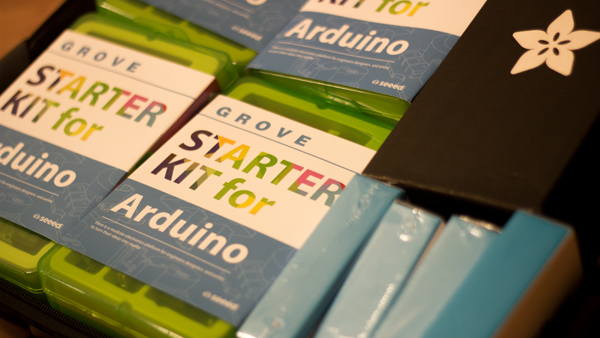
Here at Garage, I met with the Coordinator of the Inclusion Department and after discussing some key points, I was offered a tour to explore the current exhibition at the museum, a Triennial of Russian Contemporary Art, featuring over 40 Russian artists based all over the country. Spanning the entire building, the exhibition featured seven curated themes prevalent among Russian art practice today — Master Figure, Art in Action, Fidelity to Place, Personal Mythologies, Common Language, Local Histories of Art and Street Morphology. It took me a while to take in the full extent of all the work presented in the exhibit. It ultimately gave me an understanding of where Russian Contemporary Art currently sits within today’s Russian society and the post-Soviet era context.
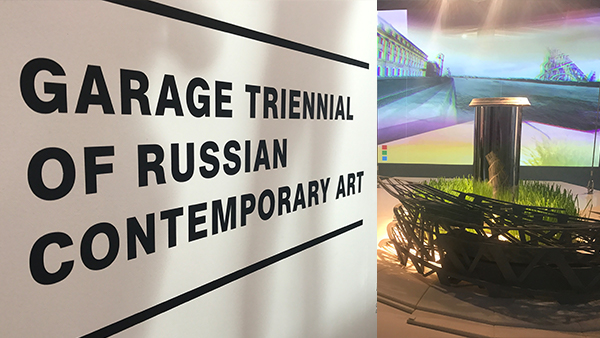
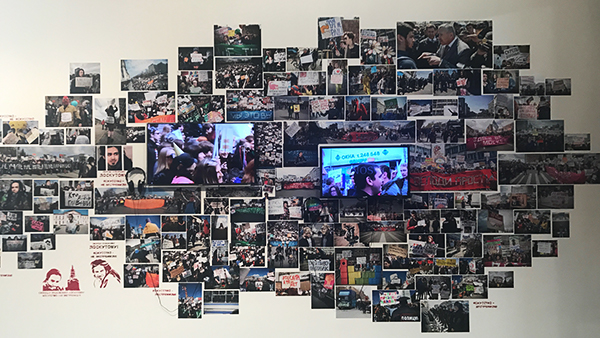
The Art of Action whose intentions lie as catalysts for social change. Photo: Elaine Cheung
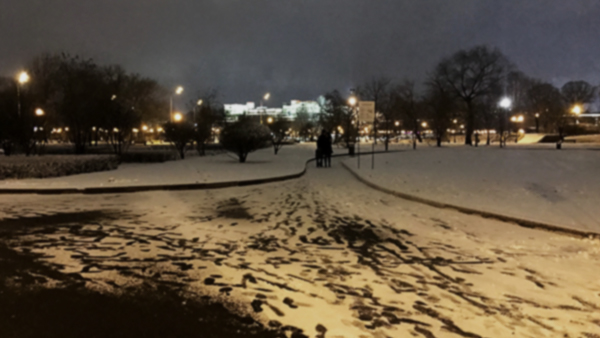
As I made my way back to my apartment that night, the snow fell slowly. The freezing air created beautiful flakes across the water as my breath materialized in front of me. It’s cold and chilly but I’m excited to begin!
As I prepare for departure, I’m getting even more excited to host a workshop at the Garage Contemporary Museum of Art soon after I land in Moscow. The workshop will explore how art be used as a tool to address disability inclusion. I will leverage my skills in electronics, interactive design and wearable technology to guide learning around the role art, combined with interactive media, can play in creating new models and visions for a future where people with disabilities can experience art in new, accessible and inclusive ways.
The workshop will be a learning lab focused on introducing ways to place technology on the body. We'll also look at how basic sensor tech and sensory exploration can inform and allow us to reinterpret our senses, augmenting them in different ways. I hope these ideas and creative explorations can help us explore the various ways disability can inform the future of art and design. By designing with people with disabilities from the start, getting people excited by what can be made through the lab, and having inclusive design inform the learning process, the workshop can be a source of creative play and learning to use empathy in the design process.
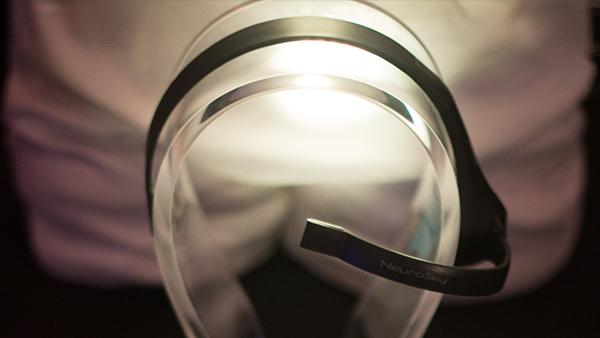
I’ve just come back from a trip to Austin, TX for the South by Southwest conference that focuses on film, music and interactive technology. I was presented as a finalist for the Student Innovation Award with my thesis, work that really informs this current exploration into wearables and health for American Arts Incubator. Using this residency as a place to inform my own practices, it’s my hope to provide a space and community that cultivates inclusion and creative expression. I’ve been able to represent the body in new ways informed by teachings on consciousness and human experience. By conceiving of technical apps that help guide and navigate a user in difficult mental situations, to creating a speculative interface that aids in a spiritual journey, expressive prototypes that design alternative health systems can help inform a unique vision of what can be possible in the future.
As a designer, I look towards my environment and observations of the people around me as sources of inspiration and intrigue. In observing, watching and looking for threads of disability throughout my travels and in daily reoccurance, I have become acutely aware of how spaces are inhabited by invisible and visible bodies.
It’s interesting to consider how much people with disabilities have to “honk”, “wait” and “display” themselves in public to be noticed and assisted. In terms of wayfinding and navigating the public environment (as show in the images above on the left, a building, and on the right, gas stations), navigating the environment is seen as a very independent process in America. In order to “evacuate” or “have gas pumped”, someone with disabilities might require assistance. So importance is placed on one’s need to proclaim disability, as seen through the “wheelchair” sign or display placards on cards.
When I traveled to Hong Kong and used their subway system, a curious little device caught my ear...
Here, a melody of tones play to help the user locate the device. The interface is fitted with braille and raised surfaces to map out the subway through tactile forms. It uses the senses of audio and touch to communicate information with the user. The subway is an especially busy place in Hong Kong, where people walk more and use public transportation. With special devices installed for the blind, people with disabilities can navigate the subway stations and walk around to get from place to place.
Looking at design can give great inspiration to an artist. How can design influence art and artistic expression? The functional and utilitarian ways of navigating space with a disability provides an interesting perspective on how one lives with disability, often dependent on available tools in public environments to maintain relative independence. What is interesting is how culture plays such a large role: shaping how visible or invisible a disability is, how much independence is given to the user, even how the users feel during the interaction. Oftentimes, the interaction is a very visible experience where one is labeled with the identity of the disability as understood by other people. Navigating public spaces then requires a certain degree of social vulnerability and visibility at the same time.
So what about the influence of disability in spaces of play or expression? The example of the tactile interface with the friendly melody coaxes the user towards the wayfinding station, adding personality and charm to the experience. I’m reminded of spaces like festivals or theme parks where recreational immersive experiences become spaces of play and imagination. What would it mean to play and “share space” in ways that go beyond languages and abilities?
Navigating such environments, as shown here at the TomorrowWorld festival, an attendee and her deaf friend are there enjoying the music, which can be interpreted and appreciated in a number of ways that exceed the sense of sound. The feeling of the bass, emotional meanings, sights and elements presented in the whole experience create an immersion in sensory experiences and meanings. There is also the sense of inclusion evoked by them dancing and enjoying the moment together. Imagine what might be possible if new kinds of sensory tools were developed that could interpret our reality in shared spaces to allow for inclusive interactions.
The influences technology has had for people with disabilities is far reaching. Take for example, the hearing aid, where its influence can be felt in the design of headphones and earbuds with ever increasing need for smart technology, like wireless communication. With the popularity of audiophiles and our audio-visual culture, we are surrounded by exciting examples where disability inspires expression, like in the sense of hearing and sight. Here we are still looking at the framing of disability through the loss of sense and amplifying it through electronics. The hearing aid’s functionality and purpose are to amplify the surrounding environment, while headphones enable users to switch to a completely different digital or analog environment. The headphones add a layer of expression and emotion on top of our existing environment. Design and artistic expression can tackle situations in new ways that can bridge both physical and mental disabilities.
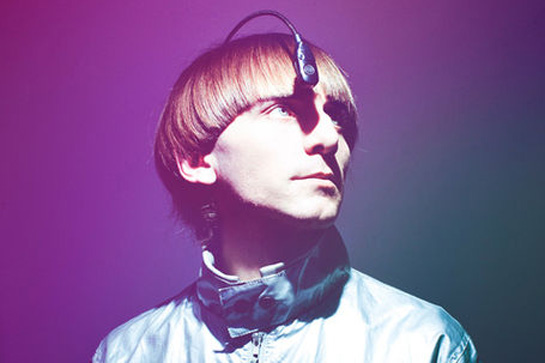
Over the next few weeks, I will begin to explore how accessibility and sensitivity can be designed into our environments and experiences. I’m excited to explore such possible avenues that wearable technology can have both in America and in the streets of Moscow. Looking at disabilities inclusion through the lens of an arts exchange such as AAI, the emerging influence of wearable technology in the West can find new inspiration within the rich visual art and culture found in Russia. Beginning to explore socially engaged art through emerging sensors and wearables can begin to break down barriers and promote inclusion through new kinds of social, and possibly sensory, interactions.
It is quite a time to be traveling to Moscow, Russia for my American Arts Incubator Exchange with ZERO1. As both an artist and a cultural ambassador, this type of opportunity exemplifies how art has the potential to change and create new dialogue around social issues. I use my past experience in community centers and NGOs to cultivate an awareness of inclusive spaces as a way to better understand the social dynamics at play in community. I’m fascinated by how people gather, create diversity and cultivate art to share stories and ideas.
My technological pursuits in my art practice have been marked by this sensibility to use emerging technology as tools to empower and engage. Much like social media, I have keen interests in the combination of community, art and technology to engage, immerse and play in new and innovative ways. As a recent MFA graduate of Art Center, College of Design in Pasadena, CA, I’ve come to view technology through many lenses. With a graduating year spent looking at ways wearable technology can create new experiences that come from shifting our perspectives, I've gained a deeper understanding of how future technologies and experiences can perhaps begin to create empathic experiences.
To be addressing the social challenge of Disabilities Inclusion in Moscow this spring is a natural progression from this understanding of inclusive empathy. By doing so, I hope to better understand how wearables are beginning to alter and augment the human body.
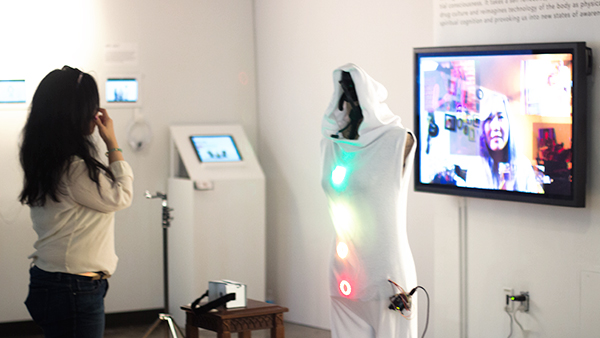
This presents an interesting perspective on how the unique challenges people with disabilities face can provide new insights to the ways wearables and new media can transform our understanding human ability, and how we see other people.
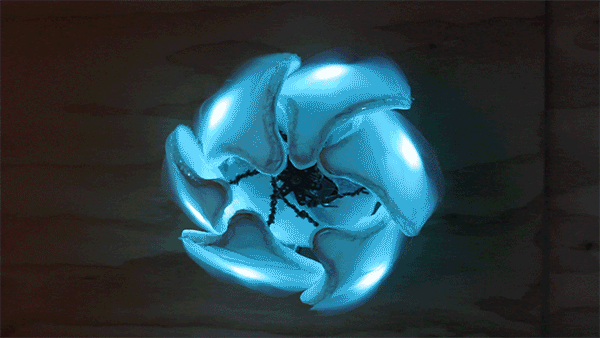
How can relationships begin to heal and attitudes begin to shift through the power of play and media? Through artistic expression and tools of creation, I will play with mixed performative storytelling through the mediums of color and light. Thinking about social inclusion in this way can present the art field with alternative ways of seeing, hearing and perceiving, especially in the exhibition space.
I’m grateful to be collaborating with the partner organization, Garage Museum of Contemporary Art who curated the show Co-Thinkers last year. I’m excited to apply a process that lies at the intersection of socially engaged art and technology to better understand one another and ourselves, thereby shifting the way we think about “abilities” in unexpected ways.